“Portable, digital cameras, digital sound recording equipment and non-linear digital editing have had a very significant impact on documentary film.” How far has digital technology had an impact on your chosen documentary film?
Sample Assessment Materials, 2021

Introduction: The significance of digital technology generally, how it has affected filmmaking.
Body: How Kim Longinotto has utilised digital technology in order to create an unobtrusive observational documentary.
Described examples: Opening wide shot, able to film everything (‘favouriting’ footage, revealing moments “that’s what you men do”), portability (small and can conduct spontaneity panning, tilting, zooming. Swift and fluid movements), autofocus, natural lighting, no external sound equipment, multi-camera setup (cameras are cheap, two sides of the law – divorce sequence, storage is cheap and limitless, no cartridge swapping), non-directional microphone. Authentic long takes in Manka and divorce sequence, Manka scars, changing outcome of trial.
Conclusion
Essay – Version 1
The implementation of digital technology has had a vast impact upon filmmakers. Due to digital technology: cameras are much cheaper to purchase, editing is no longer permanent and films are much more widely available to general audiences. More specifically, the impact of digital technology has also greatly affected the documentary filmmaking scene in a multitude of beneficial ways. A great example of this can be seen within Sisters in Law (Kim Longinotto, 2005), in which Kim Longinotto employed the use of digital technology throughout the production process in order to produce an unobtrusive observational documentary.
The film opens on an establishing wide shot of the outskirts of Kumba, Cameroon. Due to the fact that this is filmed using a digital handheld camera out of a car window, Longinotto is able to make use of the built-in digital stabilisation. This allows the shot to be of a high quality and suitable for the cinema, despite the fact that it was filmed in a moving vehicle. This also demonstrates the fact it is not a requirement to be an expert cinematographer in order to operate a digital camera – democratising documentary filmmaking. Due to digital storage being extremely cheap and practically limitless, is likely that Longinotto filmed out of the window for an extended period of time. Afterwards, the take was likely edited together in post-production, through the apt use of digital non-linear editing software to demonstrate her journey into the village.
As Longinotto has the ability to film everything she encounters in Kumba, she is able to ‘favourite’ specific clips during the production process. As a result, she is able to start the editing process earlier and capture and display a number of revealing moments within the documentary. An example of this can be seen in the opening sequence when Vera Ngassa, the state prosecutor, exclaims “that’s what you men do!” to the husband of a wife seeking legal support. The lightweight and portable nature of the camera also allows Longinotto to conduct an extremely reactive style of filmmaking, letting her fluidly pan, tilt and zoom the camera as she deems appropriate. The digital autofocus feature is also utilised throughout the sequence, an example being when Longinotto swiftly zooms in on a closeup of Vera. The shot is out of focus for a brief unnoticeable moment, but the autofocus soon activates and the closeup is in perfect focus.
During the Manka sequence, when the aunt is summoned for questioning, Longinotto is able to initially zoom in on a closeup of the her, and then later zoom out to reveal a three-shot: displaying the aunt, Stephen and Manka. This demonstrates the digital camera’s ability to smoothly reposition a frame. Alongside this, due to the camera being so unobtrusive, no one is fazed by its presence – including young Manka herself. Unlike an imposing celluloid camera, this allows the events of the documentary to occur in a much more authentic manner. The digital camera is also able to exhibit the scars on Manka’s back, despite the dim lighting of the cramped office.
Throughout Sisters in Law, Longinotto’s use of digital sound recording is a much more convenient and intuitive process due to the fact no obtrusive equipment – such as external sound recorders or boom poles – are required. Instead, all the sound is captured and recorded with the use of a subtle non-directional microphone, and the requirement to synchronise sound in post-production is nullified. This makes the editing process much more efficient in effect. As digital cameras are much cheaper than analogue, Longinotto is able to afford a multi-camera setup, employing a co-director: Florence Ayisi. The setup is extremely useful in separating the two sides of the law in the divorce sequence, as well as providing good coverage of the courtroom. One camera is positioned in the corner of the room, whereas the other is stably positioned behind the couple, framing a two-shot. As Longinotto is not limited by storage, she is able to aptly utilise a variety of long takes throughout the Manka and divorce sequences. Despite the implementation of light editing to compress events, this makes the documentary seem much more authentic.
With particular focus on digital cameras, digital recording software and non-linear editing, Longinotto has intuitively utilised digital technology in a number of ways throughout the production of Sisters in Law in order to produce an uninterrupted observational documentary. Being extremely cost-efficient and accessible, digital technology has successfully democratised documentary filmmaking and positively impacted the medium as a whole.
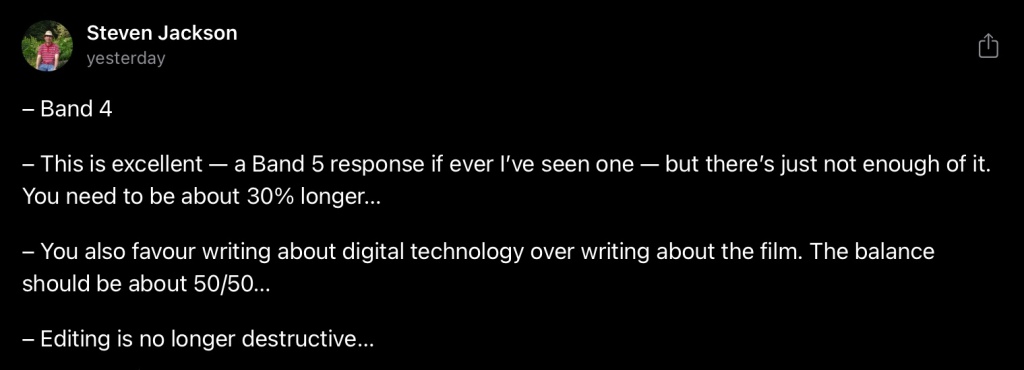
Essay – Version 2
The implementation of digital technology has had a vast impact upon filmmakers. Due to digital technology: cameras are much cheaper to purchase, editing is no longer permanent and films are much more widely available to general audiences. More specifically, the impact of digital technology has also greatly affected the documentary filmmaking scene in a multitude of beneficial ways. A great example of this can be seen within Sisters in Law (Kim Longinotto, 2005), in which Kim Longinotto employed the use of digital technology throughout the production process in order to produce an unobtrusive observational documentary.
The film opens on an establishing wide shot of the outskirts of Kumba, Cameroon. Due to the fact that this is filmed using a digital handheld camera out of a car window, Longinotto is able to make use of digital image stabilisation. This allows the shot to be of a high quality and suitable for the cinema, despite the fact that it was filmed in a moving vehicle. This also demonstrates the fact it is not a requirement to be an expert cinematographer in order to operate a digital camera – democratising documentary filmmaking. Due to digital storage being extremely cheap and practically limitless, is likely that Longinotto filmed out of the window for an extended period of time. Afterwards, the take was likely edited together in post-production, through the apt use of digital non-linear editing software to demonstrate her journey into the village.
As Longinotto has the ability to film everything she encounters in Kumba, she is able to ‘favourite’ specific clips during the production process. As a result, she is able to start the editing process earlier and capture and display a number of revealing moments within the documentary. An example of this can be seen in the opening sequence when Vera Ngassa, the state prosecutor, exclaims “that’s what you men do!” to the husband of a wife seeking legal support. The lightweight and portable nature of the camera also allows Longinotto to conduct an extremely reactive style of filmmaking, letting her fluidly pan, tilt and zoom the camera as she deems appropriate. For example, she frequently pans the camera in the opening sequence between Vera and the couple depending on who is speaking, which is reminiscent of eyes following a conversation. The digital autofocus feature is also utilised throughout the sequence, an example being when Longinotto swiftly zooms in on a closeup of Vera. The shot is out of focus for a brief unnoticeable moment, but the autofocus soon activates and the closeup is in perfect focus.
During the Manka sequence, when the aunt is summoned for questioning, Longinotto is able to initially zoom in on a closeup of the her, and then later zoom out to reveal a three-shot: displaying the aunt, Stephen and Manka. This demonstrates the digital camera’s ability to smoothly reposition a frame. Alongside this, due to the camera being so unobtrusive, no one is fazed by its presence – including young Manka herself. Unlike an imposing celluloid camera, this allows the events of the documentary to occur in a much more authentic manner. The digital camera is also able to capture a closeup of Manka’s back, which exhibits the scars inflicted by her abusive aunt, despite the dim lighting of the cramped office.
Throughout Sisters in Law, Longinotto’s use of digital sound recording is a much more convenient and intuitive process due to the fact no obtrusive equipment – such as external sound recorders or boom poles – are required. Instead, all the sound is captured and recorded with the use of a subtle non-directional microphone, and the requirement to synchronise sound in post-production is nullified. Due to this, the soundscape of the film is entirely diegetic and is mostly made up of naturalistic dialogue, underscored with the ambient sounds of the courtroom office. This makes the editing process much more efficient in effect.
As digital cameras are much cheaper than analogue, Longinotto is able to afford a multi-camera setup, employing a co-director: Florence Ayisi. The setup is extremely useful in separating the two sides of the law in the divorce sequence, as well as providing good coverage of the courtroom. One camera is positioned in the corner of the room, whereas the other is stably positioned behind the couple, framing a two-shot. As Longinotto is not limited by storage, she is able to aptly utilise a variety of long takes throughout the Manka and divorce sequences. Digital editing is no longer destructive, meaning that Longinotto is able to freely edit the takes together in a non-obtrusive manner. Because of this, light editing is employed throughout the film in order to compress events and form a natural transition between sequences.
With particular focus on digital cameras, digital recording software and non-linear editing, Longinotto has intuitively utilised digital technology in a number of ways throughout the production of Sisters in Law in order to produce an uninterrupted observational documentary. Being extremely cost-efficient and accessible, digital technology has successfully democratised documentary filmmaking and positively impacted the medium as a whole.
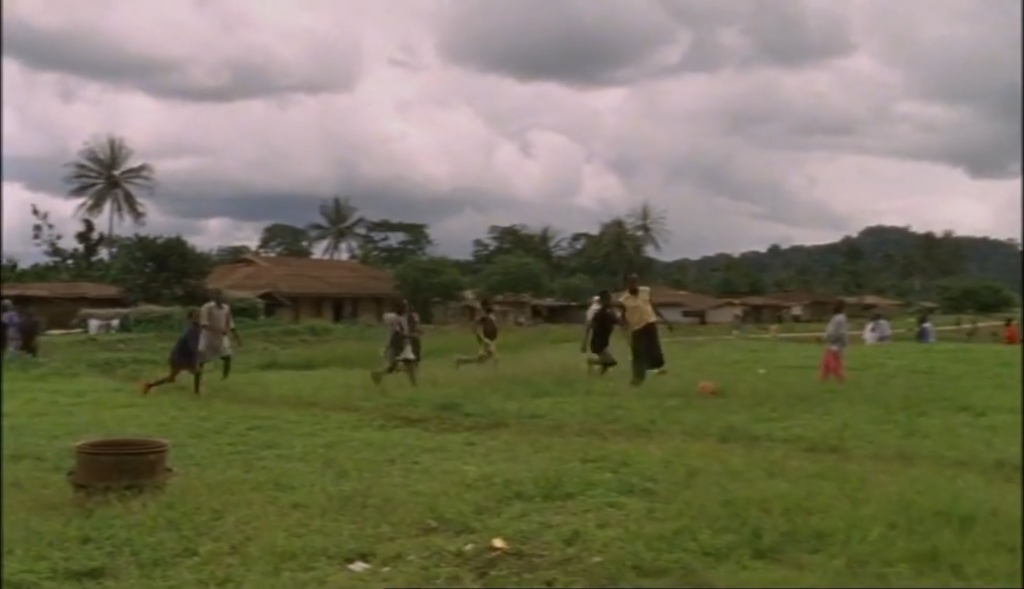
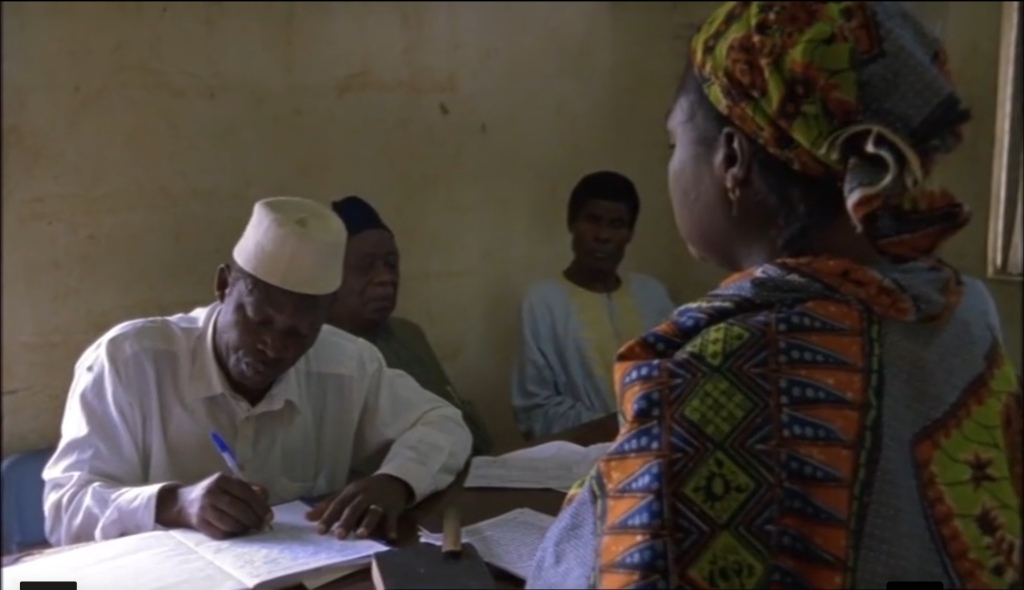
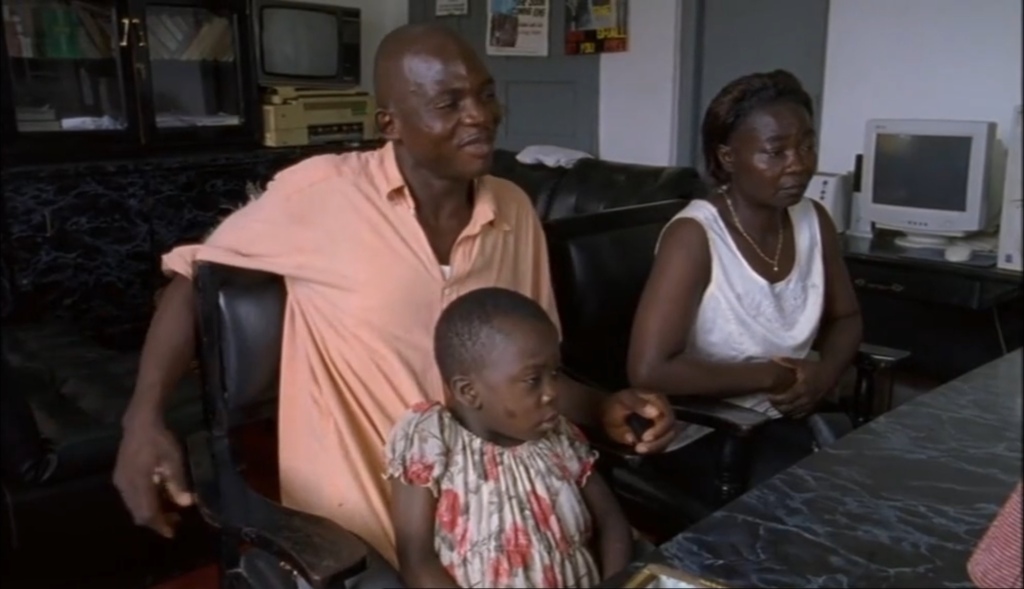
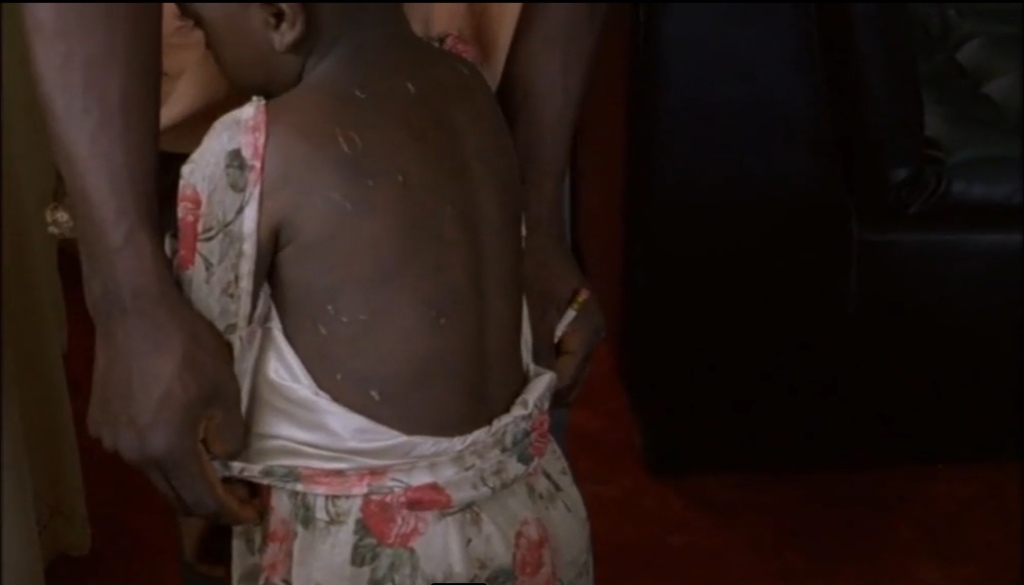
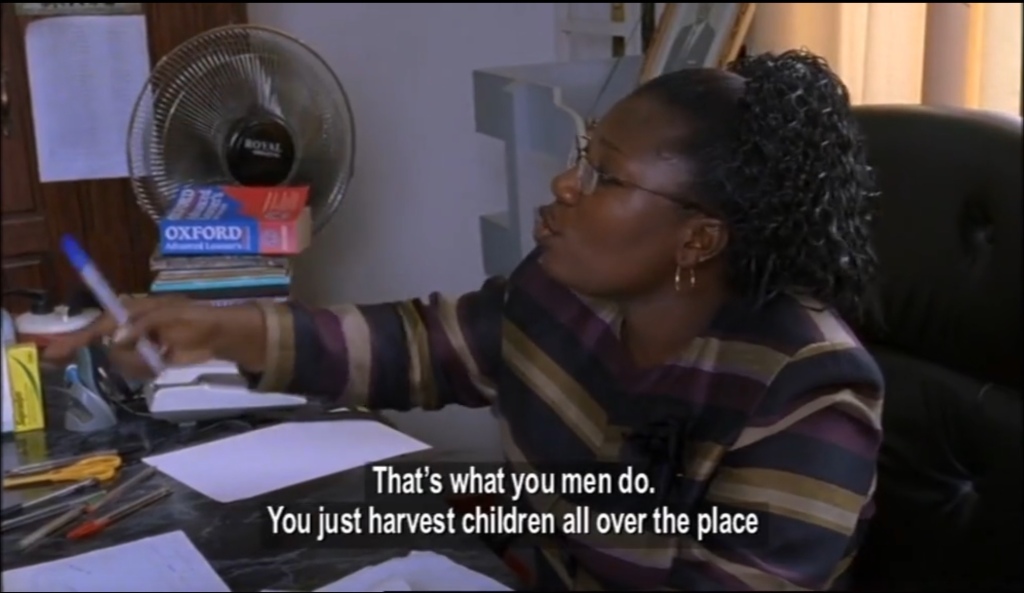
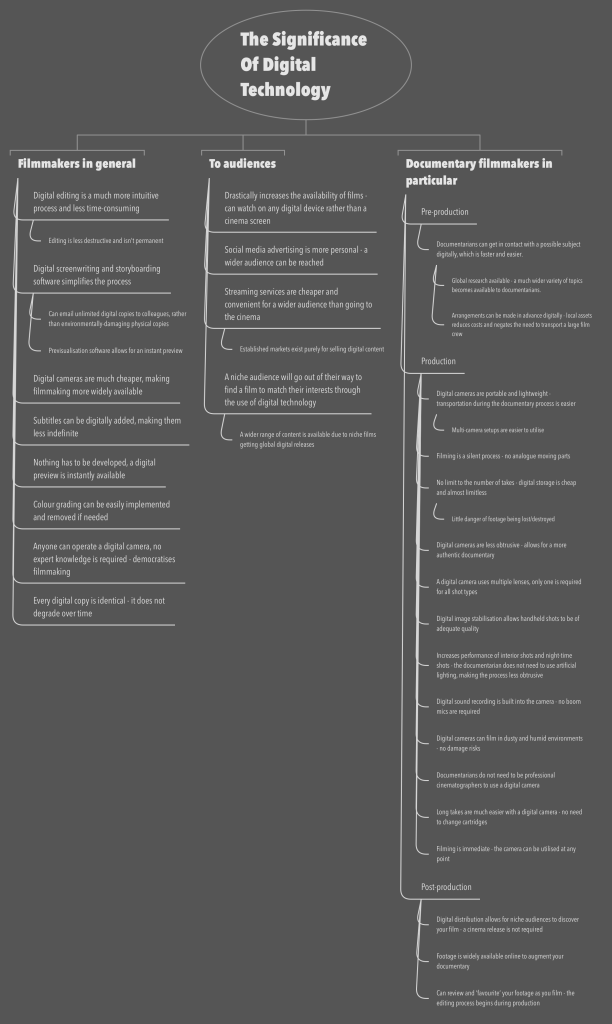
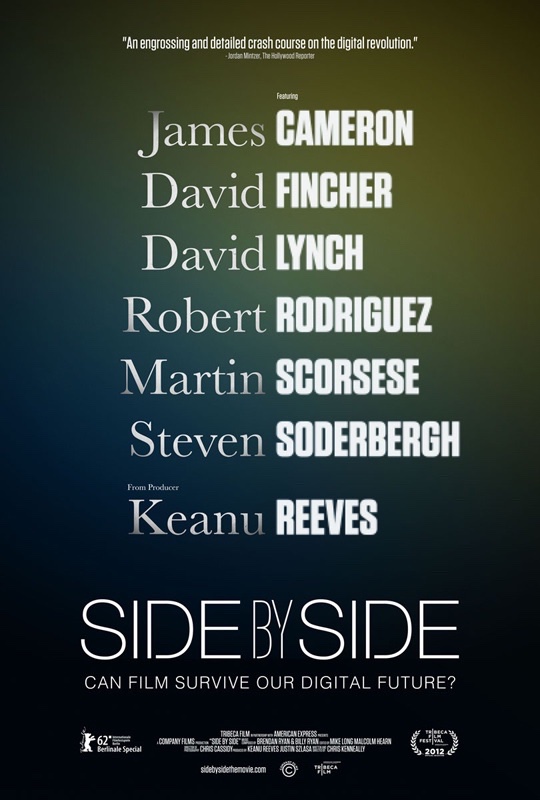
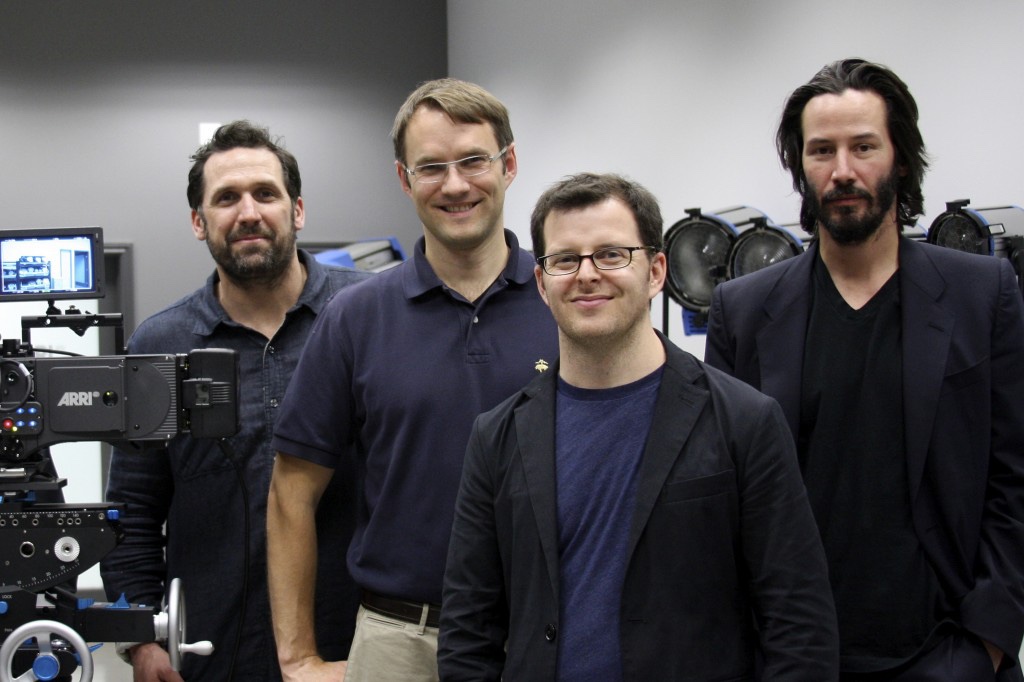
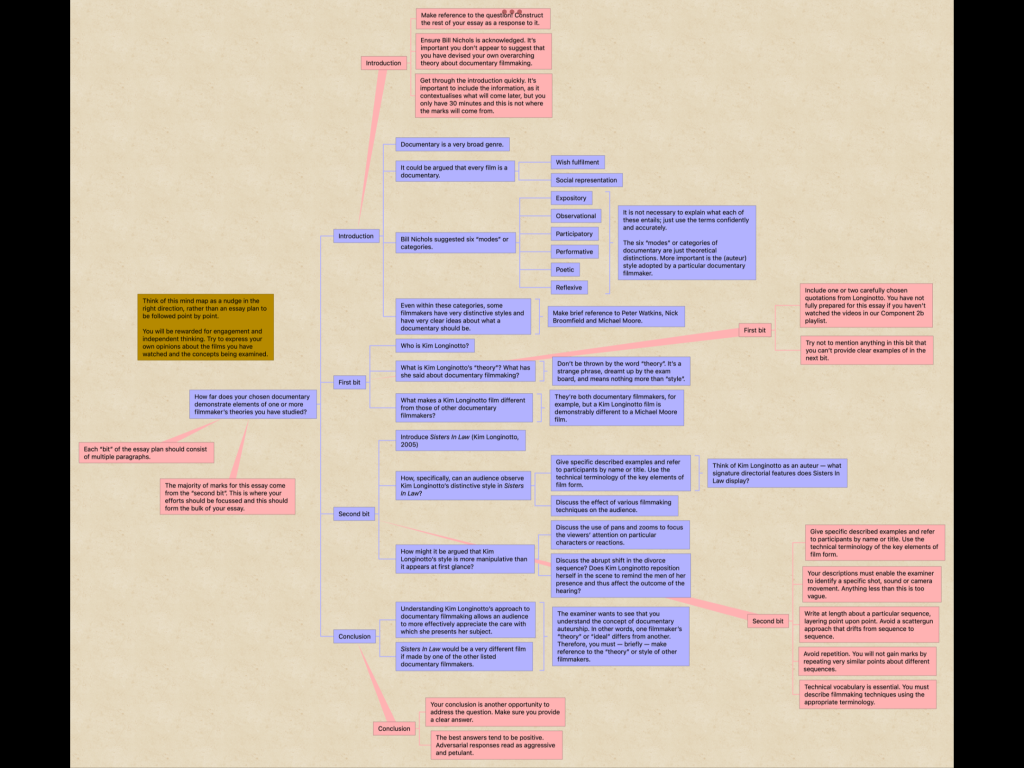
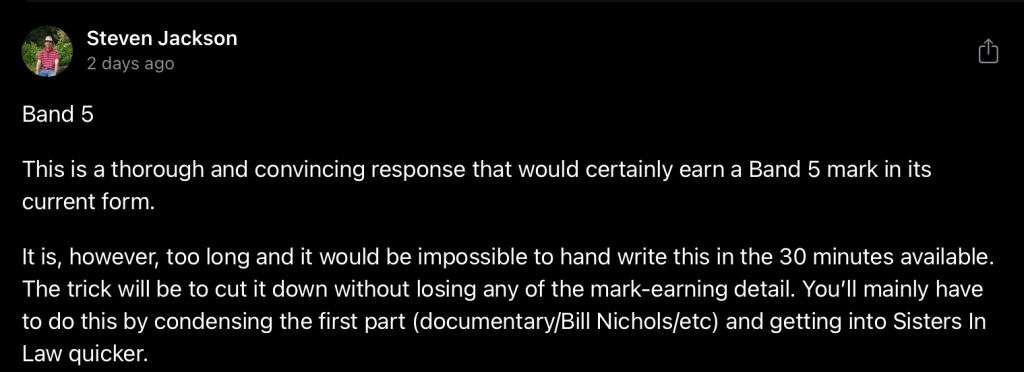
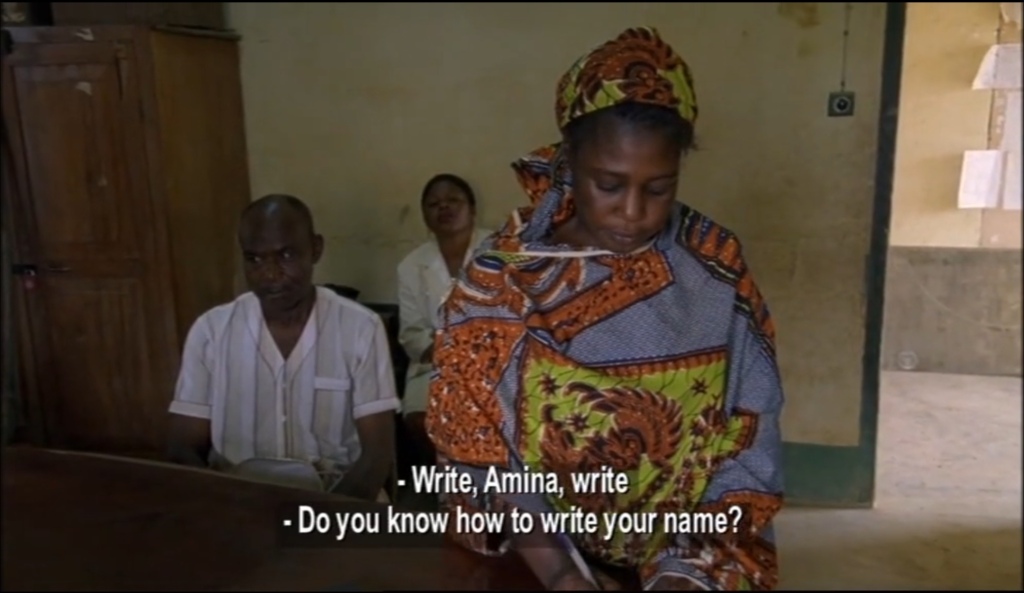


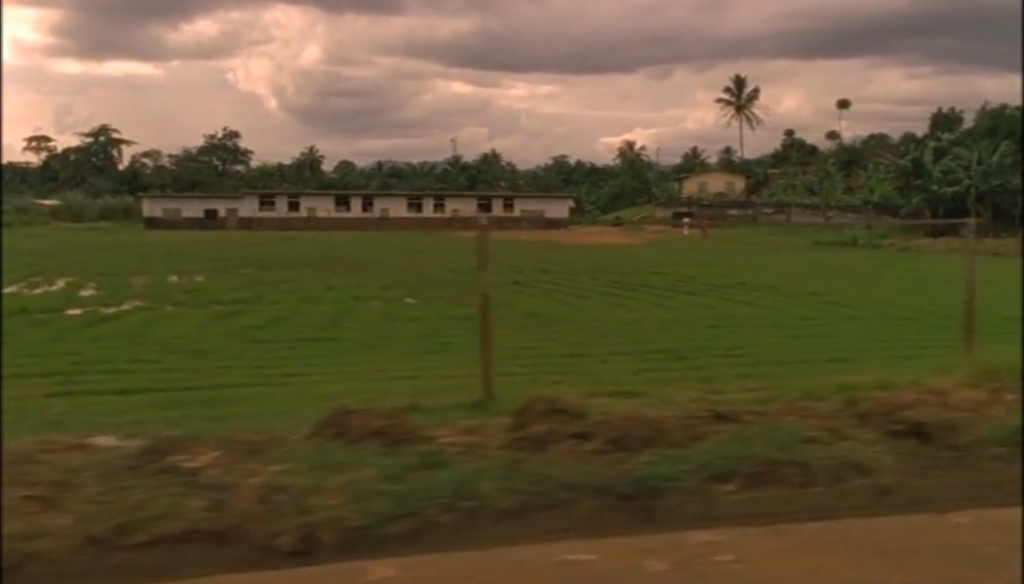
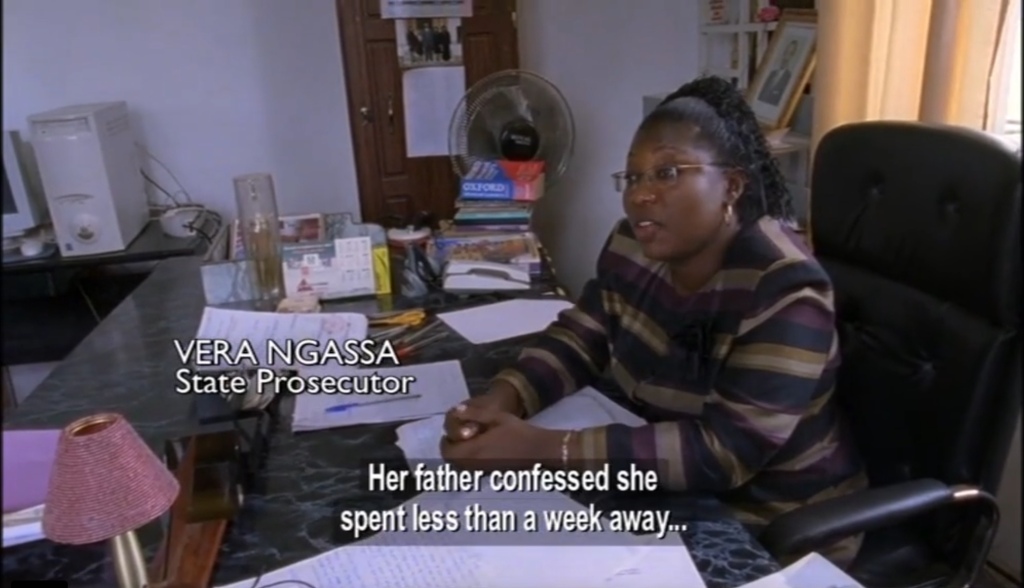
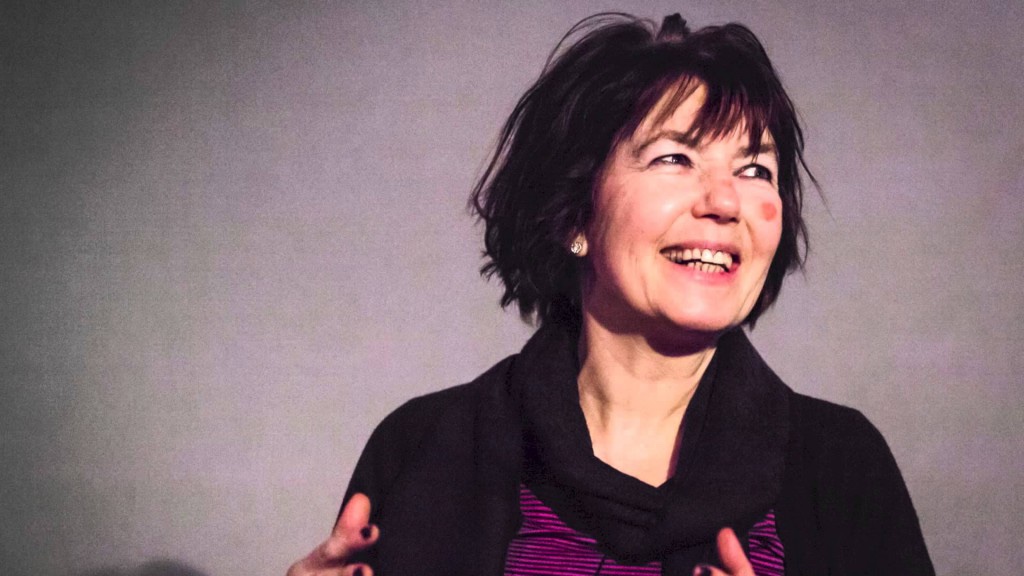
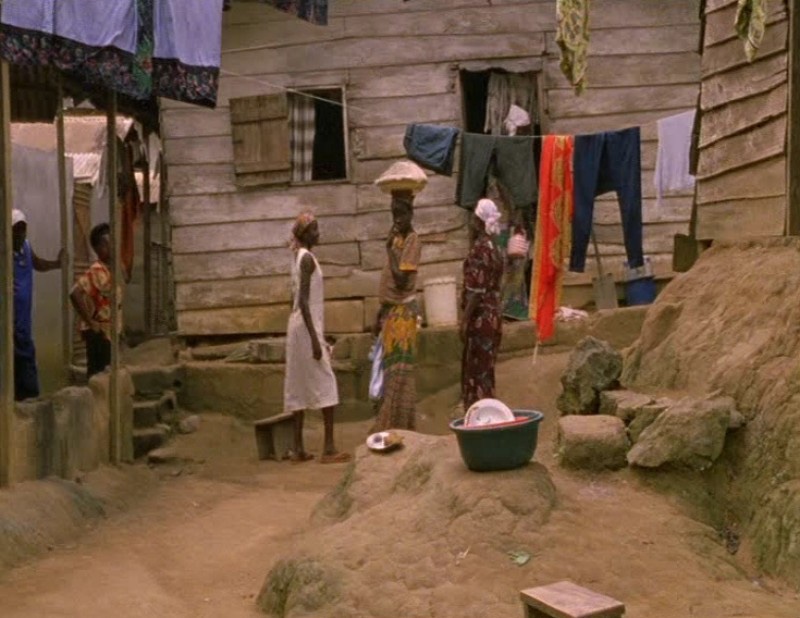


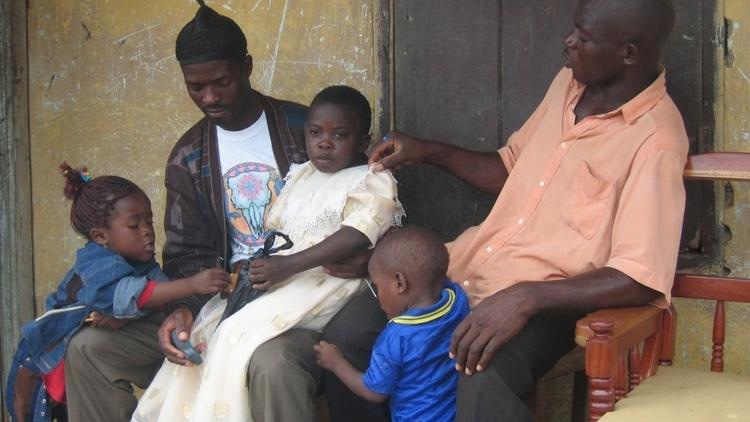
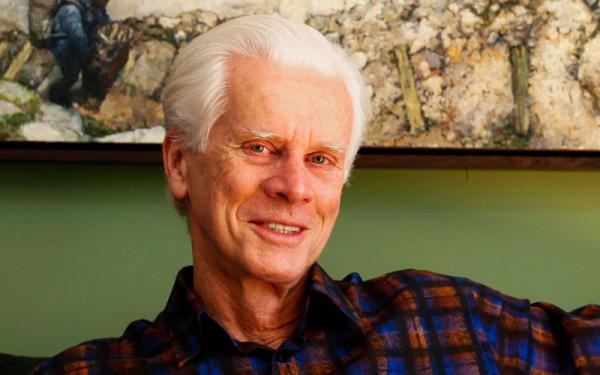
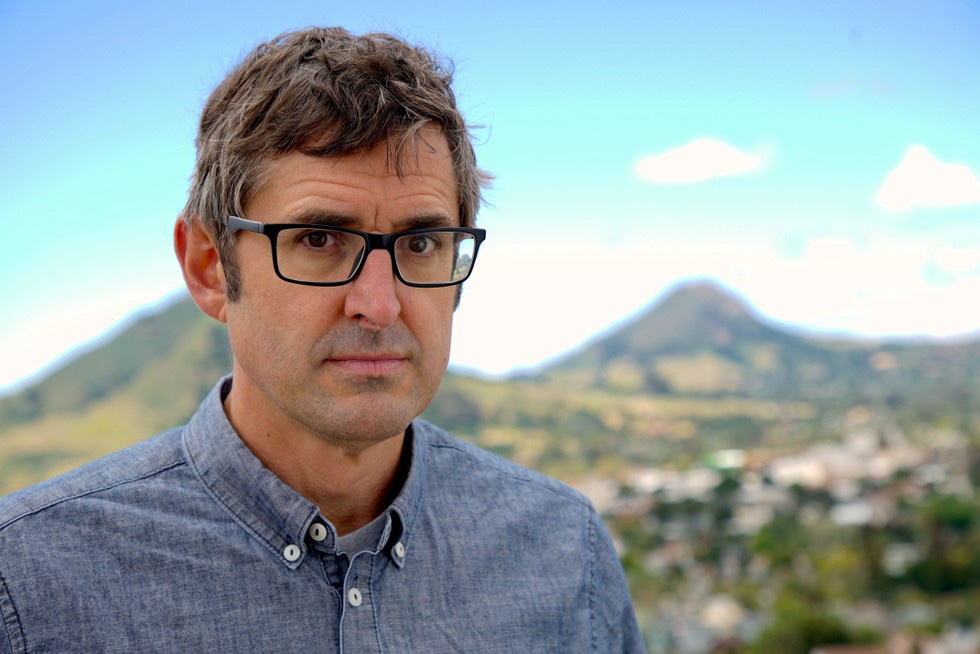


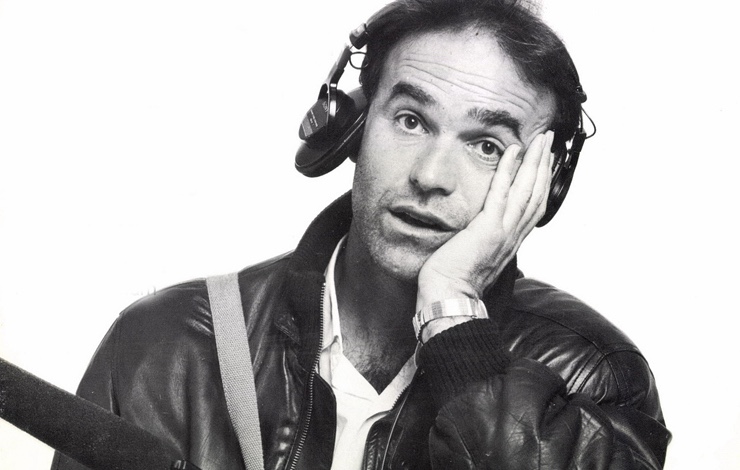
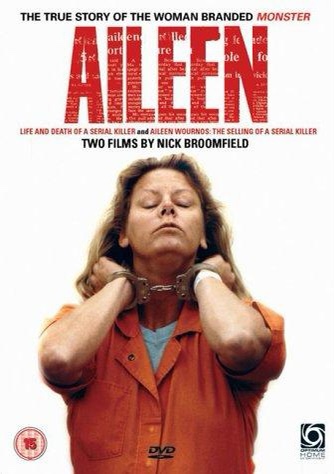
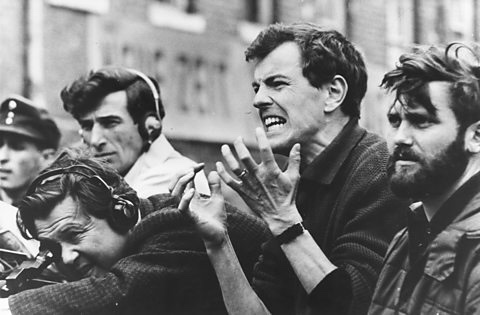
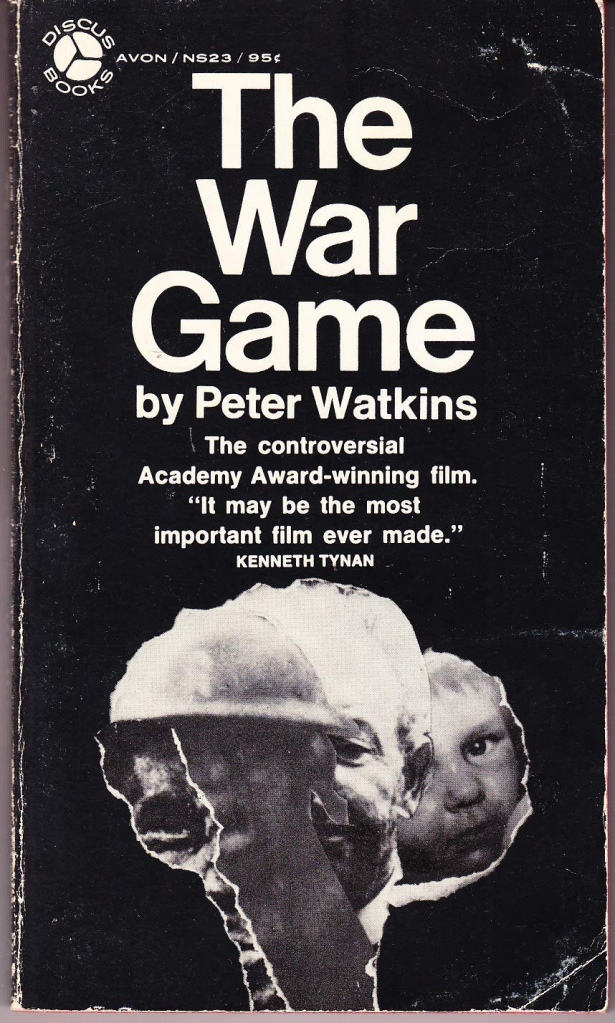
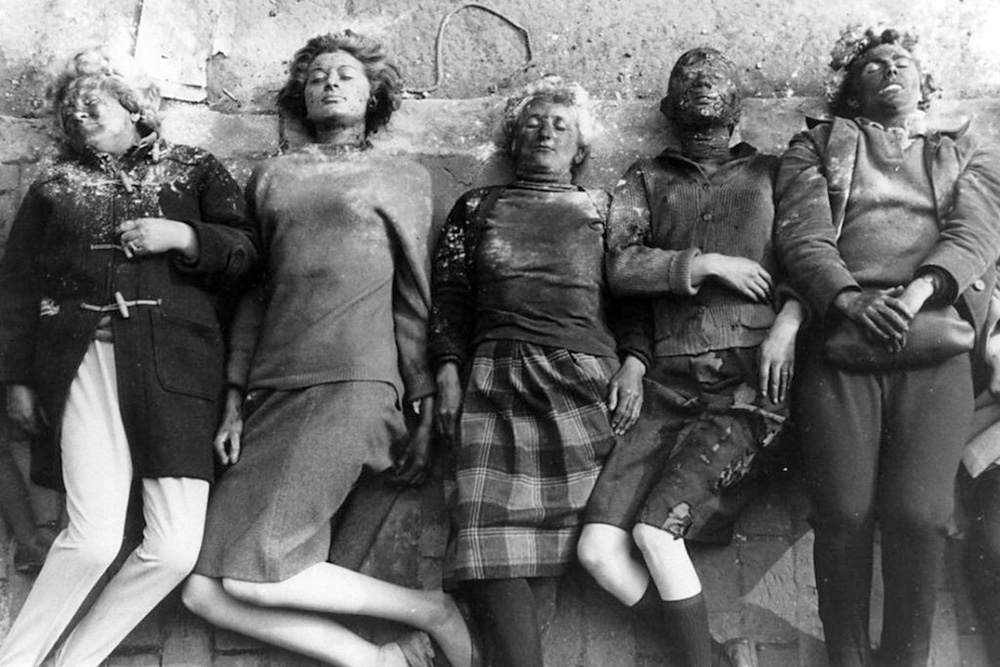
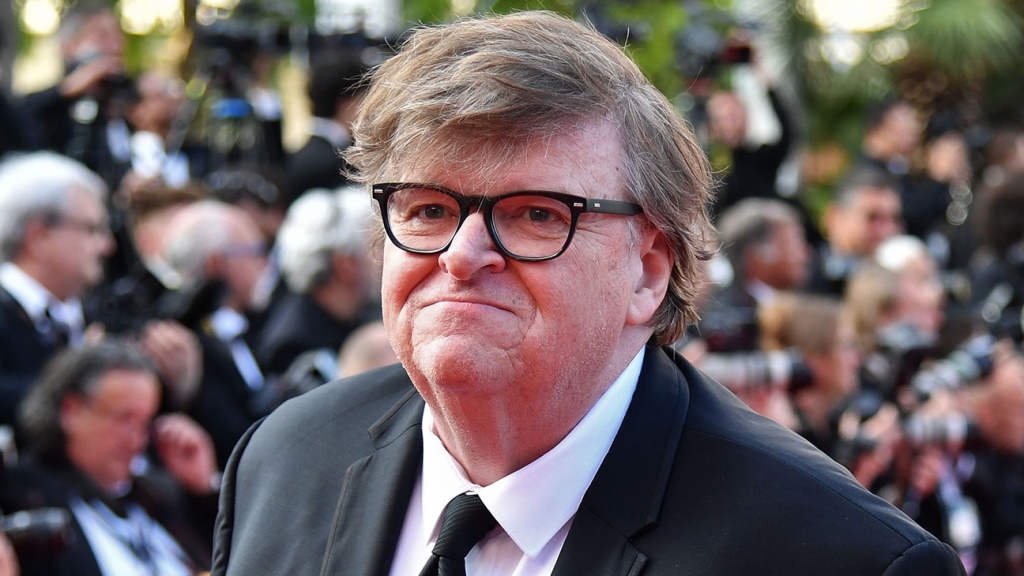
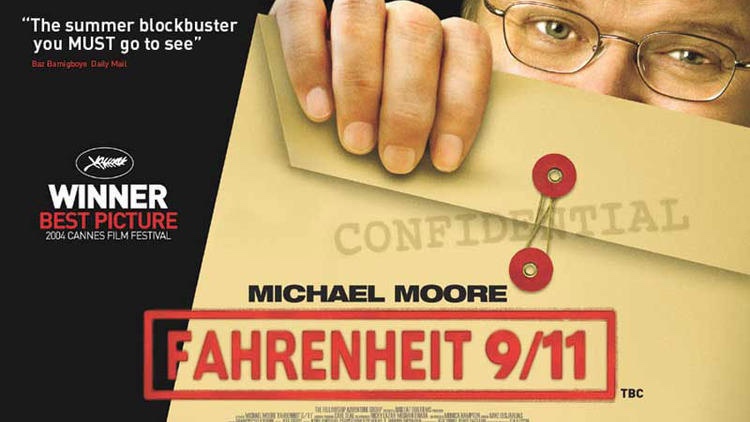
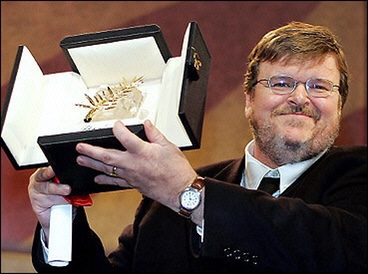

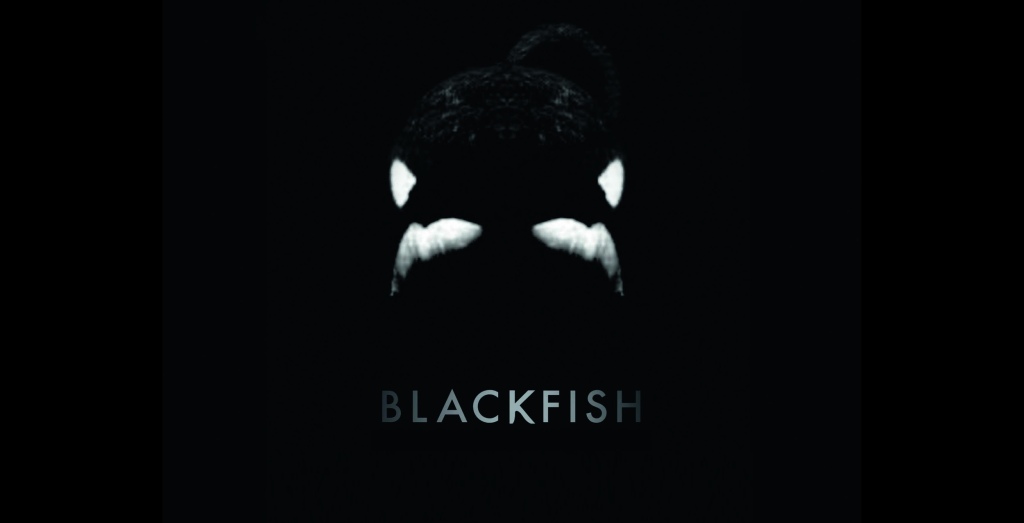
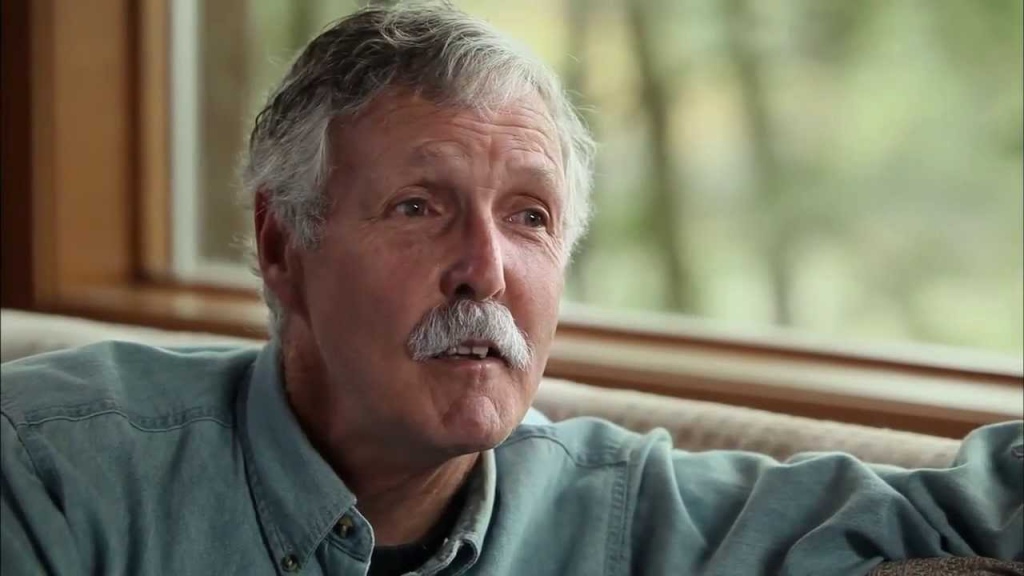

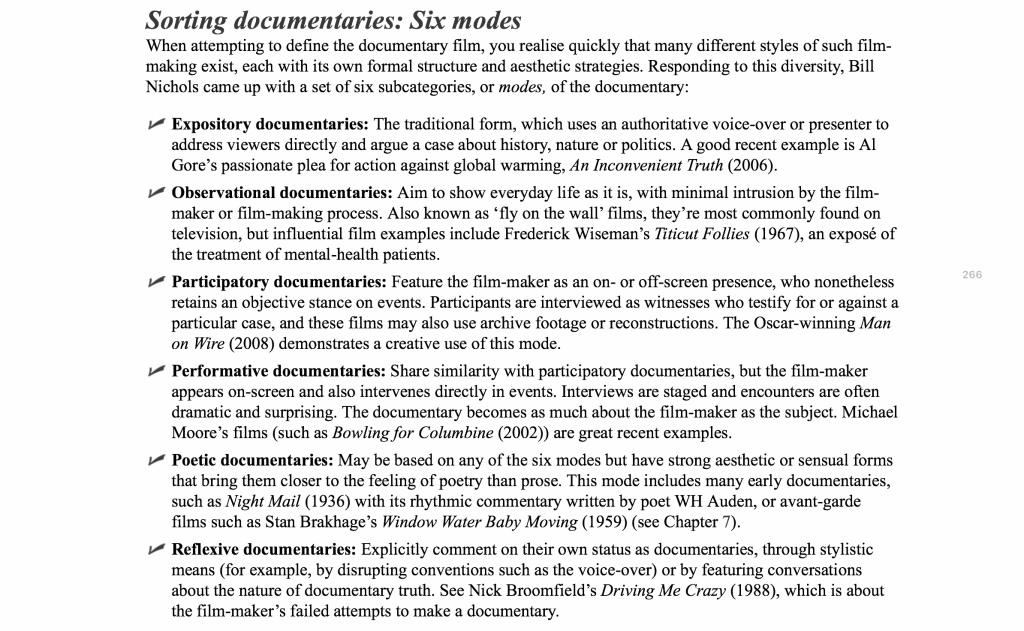
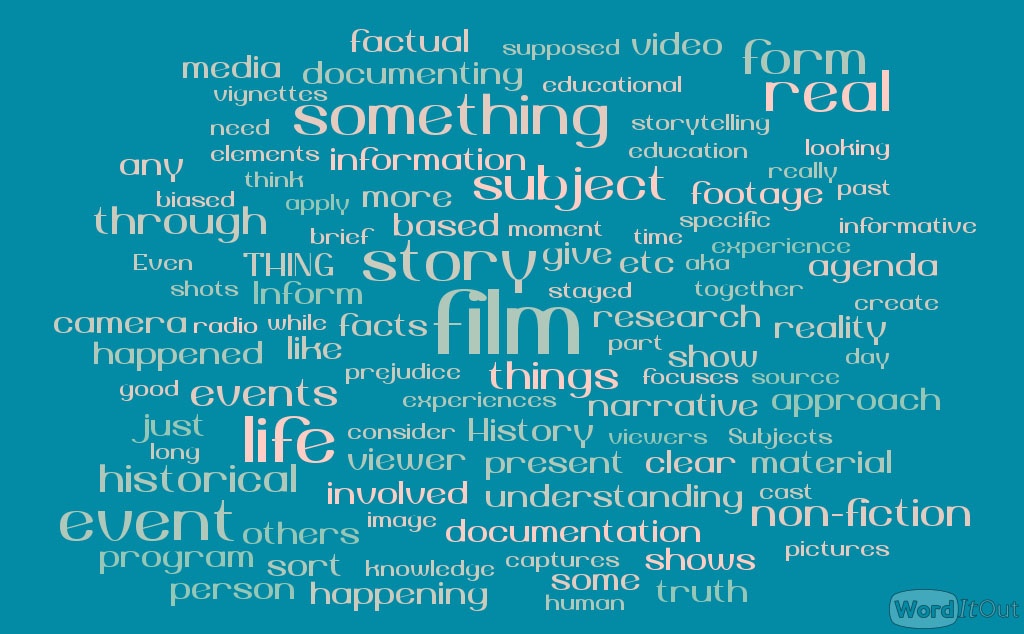
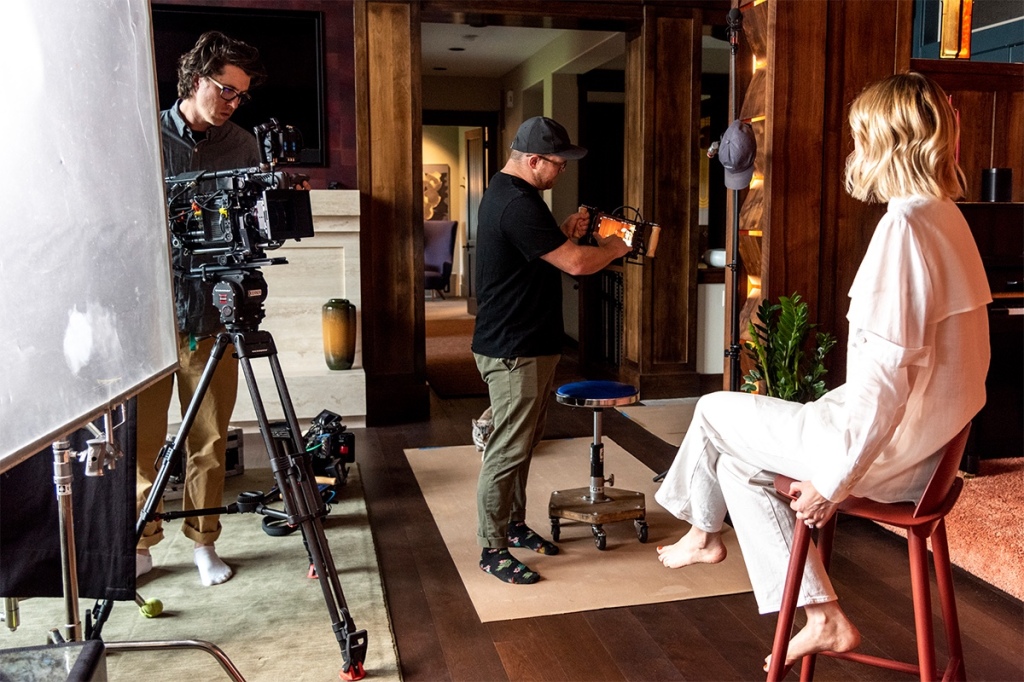
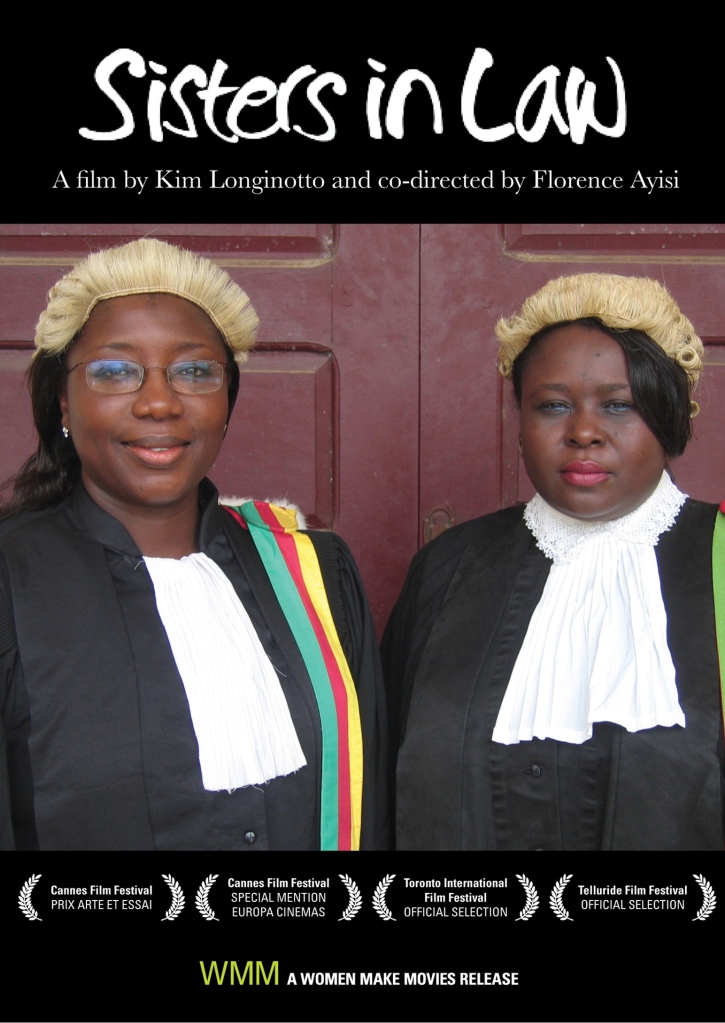
You must be logged in to post a comment.